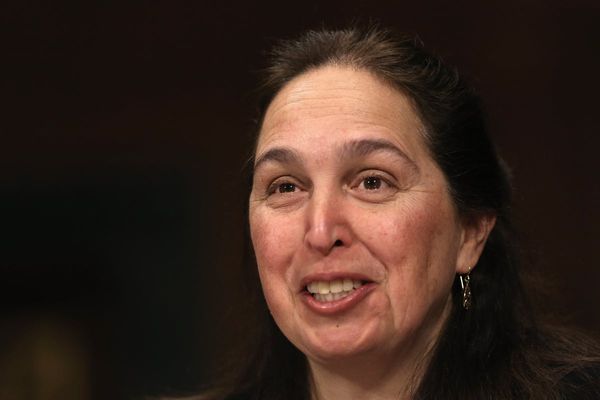
To most people driving through the waterlogged fields of West Sussex, a patch of muddy land dotted with scrubby trees would not warrant a second glance. But this former farmland is being given a new lease of life as part of a government scheme to boost wildlife.
Ardingly habitat bank is one of the pilot sites for the biodiversity net gain (BNG) scheme. Under legislation that came into force in February 2024, new roads, houses and other building projects must achieve a 10% net gain in biodiversity if nature is damaged on a site. So if a forest is bulldozed to make way for a block of flats, the developer must recreate a similar habitat, plus 10%.
But there are concerns the policy may not achieve what it promised. One year in, an assessment suggests it has so far delivered less than half the minimum amount of habitat expected. Can it be made to work?
Finding space for nature is supposed to be the priority for developments, but if that is not possible, habitats must be created elsewhere, ideally in the local area. This is where the habitat banks come in: developers can buy biodiversity units from these banks, which are located around England, to meet their BNG conditions. Habitat banks can be placed in key areas to help build ecological networks across whole landscapes, allowing nature to recover and thrive.
If all goes well, says Matthew Dodds, an associate ecologist at Environment Bank, a biodiversity gains specialist company that is responsible for 18 of the habitat bank sites that are already up and running, within 30 years, the muddy field in which the Guardian is standing could be teeming with wildlife.
This particular bank covers 40 hectares (99 acres). On a tour around the fields, Dodds and his colleague, a fellow ecologist, Sam Knowles, showed me where each pond, grassland or meadow area would be. There was a small patch of ancient woodland in the middle. Nearby was a big crop of early purple orchids that, until recently, had been contained to the forest area. These and other ancient woodland indicator species are expected to spread out and expand their populations.
A year on from the legislation coming into force (for England only at this stage), Environment Bank said that, since the start of 2025, demand had boomed, with sales in January this year matching all sales from the second half of 2024, and live inquiries standing at a value of £210m.
There are a selection of sites around England, including areas in Oxfordshire, Shropshire, Devon and Northumberland.
Knowles said half of the Ardingly site had already been sold: “Once all the units on this bank have been bought, if the demand in this area needs to be met then another habitat bank will be situated, and hopefully the dream will be to have almost a stepping stone of habitat banks in the area.”
Environment Bank said it was keen to look for land that was not as productive as it could be – land like Ardingly, which was heavy clay, making it difficult to farm. “We always look at the least productive land like this that’s struggling to make an income itself and not really providing as much as it could be,” Dodds said.
But there have been concerns about the system too. Wildlife and Countryside Link, a coalition of UK environmental organisations, released data earlier this month that showed the BNG scheme had delivered just 50% of the minimum amount of habitat expected and 13% of the amount deemed “likely” to be created.
Six hundred and eighty hectares of land have been secured for offsite habitat creation and enhancement by local authorities, with a further 93 hectares of onsite habitat reported under freedom of information requests. The Department for Environment, Food and Rural Affairs (Defra) estimated that 5,428 hectares was likely to be generated annually by BNG, and the minimum estimate was 1,551 hectares.
Richard Benwell, the chief executive of Wildlife and Countryside Link, said: “This first year has got the system running with some great projects, but in other areas low ambition, loopholes and weak enforcement have meant missed opportunities … This anniversary is a good time for government to up its ambition for net gain in local communities by closing loopholes, boosting local planning and regulator resource, and boosting gains beyond 10% to deliver more woodlands, wetlands, wildflower meadows and wildlife.
“This is a question of public trust as well as better rules. Much more investment is needed in local authorities and regulators to ensure that developers’ promises are actually delivered.”
A Defra spokesperson said: “For too long, nature and development have been unnecessarily pitted against each other. Communities and the environment deserve better than this broken status quo. That is why this government is working closely with the sector to make BNG work effectively to protect our natural world.”
Defra also said the number of offsite units being created did not necessarily signify the policy was not a success, as it did not account for onsite biodiversity gain.
But who will keep tabs on these banks? Emma Toovey, the ecology director at Environment Bank, said regulation by outside bodies would hold them accountable on their 30-year biodiversity pledge. Every site the company owns is bound through a legal agreement between the landowner and a third party – either the local authority or another responsible body – who will verify the site’s progress.
“We’ve seen huge change in the last year,” Toovey said. “We’ve seen a huge increase in capacity and skilling up across both the local government and sector developers themselves, big and small, and operators like us. We’re at a point, a year on, where none of us expected it to be quite so successful.”







